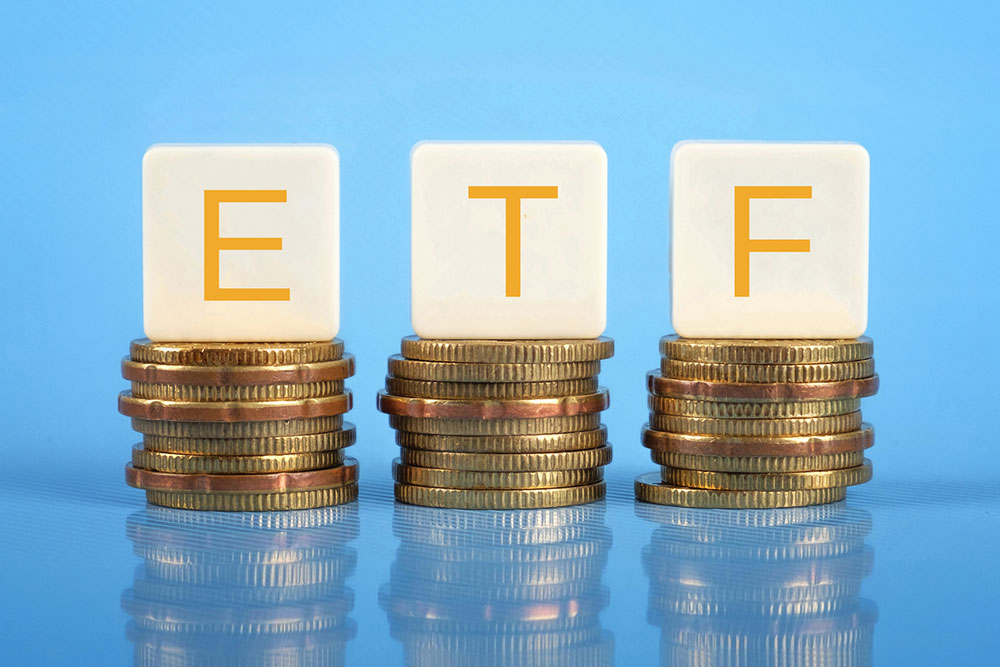Bond ETFs – Types, Tips for Investing, and Benefits

Today, there are multiple investment options that help one diversify their portfolio and get good yields. Bond exchange-traded funds (ETFs) are one such option. Often considered to carry lower risk than stocks, bond ETFs pay out interest through a monthly dividend. Those looking for a way to diversify investments and reduce overall risk can consider bond ETFs. But before that, understanding the types, benefits, and investment process of bond ETFs might help.
Bond ETFs
The type of exchange-traded fund (ETF) that invests in bonds is known as a bond ETF. It can be traded on an exchange, just like stocks. It offers investors an opportunity to invest in a huge collection of bonds, making it a more convenient means of bond investment. To begin with, bond ETFs pool money from various investors to buy a range of bonds, which can include government, municipal, corporate, treasury, and high-yield bonds. This then diversifies the investment portfolio, potentially lowering the owner’s investment risks. Investors can choose between short-term and long-term bond ETFs and can manage their bond ETFs on stock exchanges just like stock ETFs.
Bond ETFs are often considered similar to mutual fund bonds, but their holdings and fees charged to investors vary.
Types
1. Government bond ETFs
These are typically considered low-risk investments and are issued by the national government.
2. Corporate bond ETFs
These funds contain bonds issued by companies. Their risk can vary depending on the issuer company’s credit, but their yield can be higher than that of government bonds.
3. High-yield bond ETFs
These funds are also known as junk bonds and contain bonds that offer comparatively higher returns. That being said, they come at a high risk owing to the low credit ratings of issuers.
4. Municipal bond ETFs
States, counties, or municipalities also issue bonds that offer tax advantages to investors. This feature makes these funds a worthwhile investment option.
5. Treasury bond ETFs
These funds are also known for reliable returns and safety, as they are long-term government securities with maturities of over ten years.
Tips for investing in bond ETFs
It is quite easy to buy ETFs these days. Considering they trade on the stock market just like regular stocks, investors can place orders on them exactly as they would for stocks. Also, bond ETFs are available for trading on any day that the market is open, making them liquid options. Investors can also make the most of online commission-free trading to buy bond ETFs. But before deciding to buy, it is important to choose the right fund.
1. Define goals
The first step for investors should be to assess the risks they are willing to take to get the returns they want. Assessing their risk tolerance will help them identify the right bond ETFs for their profile. Government-issued options come with low risk, while high-yield bond ETFs are riskier. Also, short-term bond ETFs can be low-risk options. These funds hold bonds that mature in a few years and don’t respond to changes in interest rates, making them low-risk options. On the other hand, long-term investors might be able to secure higher yields due to the extended investment time. Some investors might want an extra source of regular income. In this case, they should look up bond ETFs that provide frequent payments. So, the choice of bond ETFs should depend on what investors want from their investments.
2. Compare available options
Research and comparison are essential steps and should not be skipped while choosing a new investment avenue. When going with bond ETFs, investors should check the current yield and review the bond performance history. Analyzing past performance will help them understand the income potential. That being said, they should note that past performance does not guarantee future results. Also, to make a sound decision, they should ensure the ETF has sufficient trading volume to facilitate easy buying and selling and enhance liquidity.
3. Open an account
A brokerage account is required to trade ETFs. So, once investors have decided on the right bond ETFs for them, the next step is to open a brokerage account online. They can choose from several online broker platforms that will allow them to open an account without making an up-front deposit. But, to buy a bond ETF, they would need to fund the account by moving money from their checking or savings account to the new account. Some platforms also provide automated investment management to help investors with their options.
4. Monitor investments
The process of investing in bond ETFs doesn’t end with the purchase. One has to keep monitoring the market and the investments to determine the right time to buy and sell bond ETFs.
Benefits of bond ETFs
1. Higher liquidity
ETFs, in general, provide investors with a higher liquidity potential than individual bonds. This means investors can reallocate their investments quickly and in bulk instead of selling multiple single bonds.
2. Lower cost
The costs or fees for trading bond ETFs in the country are about 60% lower than those for mutual funds. Additionally, one will only need to pay the price of a share to get started with a bond ETF investment, making it much cheaper than investing in individual bonds.

